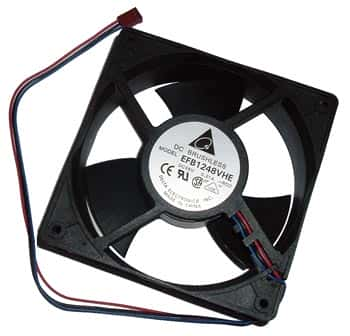Researchers at Lund University, Sweden have devised a technique for using an adaptation of the nineteenth century Trombe wall for heating and cooling modern buildings. The modified structure is capable of reducing carbon emissions associated with the heating and cooling processes, as well. Residents of Saint Catherine in Egypt are trying out the invention.
Trombe wall basics
A Trombe wall was a popular method used in the nineteenth century to keep buildings cool during the day and warm at night. The construction was simple, consisting of a very thick wall painted black on the outside surface and with a glass pane in front of it. The black surface, being a good absorber allowed the wall to absorb heat from the sun’s rays falling on it. The glass surface, being a bad radiator trapped the heat for some time. However, as the temperature dropped during the night, the heat was released slowly, keeping the building warm for several hours. Homes and buildings in the northern hemisphere had a south facing wall, while those in the southern hemisphere, a north-facing one.
An additional advantage of this structure is that the glass sheet causes the release of infrared rays. The warmth produced by these rays is more agreeable than the heat generated by traditional convection methods.
Marwa Dabaieh, an architectural scientist at the university has tried out the modern version of the Trombe wall in Egypt where 94% of the energy used is derived from fossil fuels. She explains that the innovation could help reduce dependence on electricity and cut down carbon emissions.
Cost effective production
The researchers have taken care to retain the basic construction methods. The old but popular passive technique has been employed, meaning there are no mechanical parts involved. This makes for an economical operation. The materials that are used are easily available. Wood and locally quarried stone are used for the basic construction, while wool is used for insulation. The glass used is produced locally, too.
Ventilation system
The modified version relies solely on naturally available solar energy and prevailing wind currents in the region. This makes for a very cost effective design structure.
Dabaieh reveals that the new design employs the concept of ventilation to utilize the air streams to generate cooling techniques. This is a major improvement upon the older version of the Trombe wall, which often caused over heating inside the building. The researchers are continually adjusting the vent structures and positions to make the temperature more endurable. This eliminates the need for air conditioning in the hot summer months.
Roping in the locals
Dabaieh reveals that the project has engaged local residents in the construction and installation process. This will help cut down costs further and provide employment opportunities for young people. Since many homeowners in St Catherine who have put up the Trombe wall, have expressed their satisfaction about the structure, several other residents are keen on installing it.
The adapted Trombe wall is a cheap and efficient system that could serve to meet the challenges posed by rising energy requirements worldwide.

